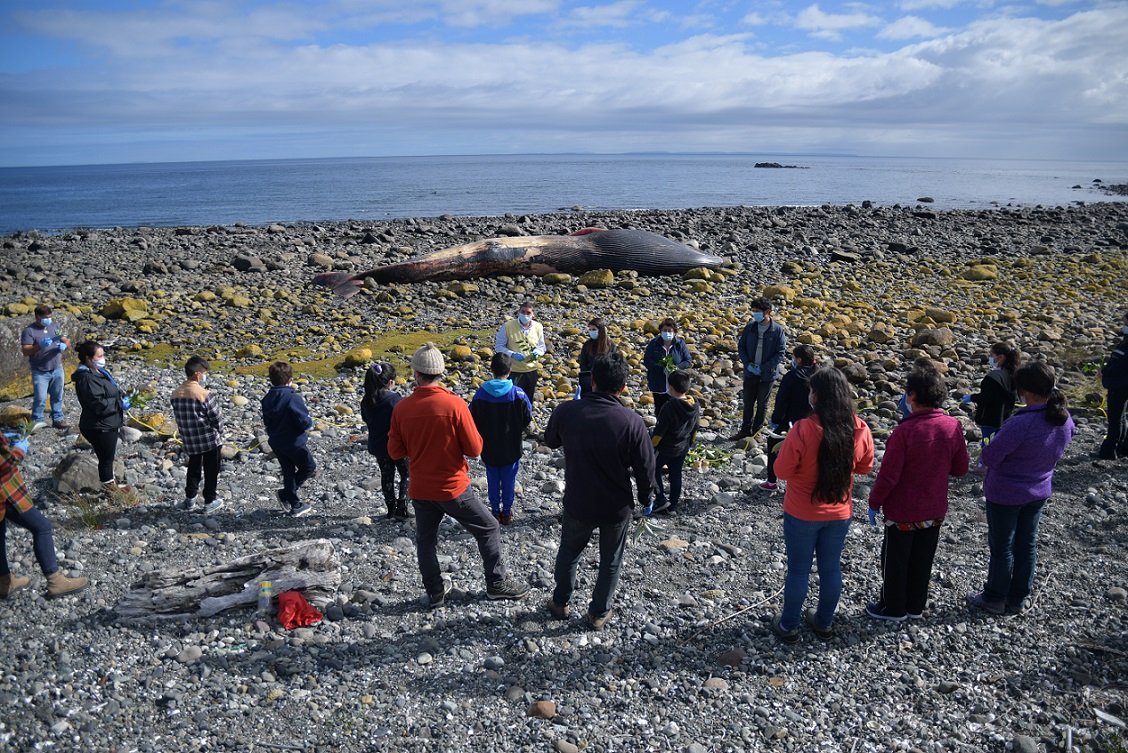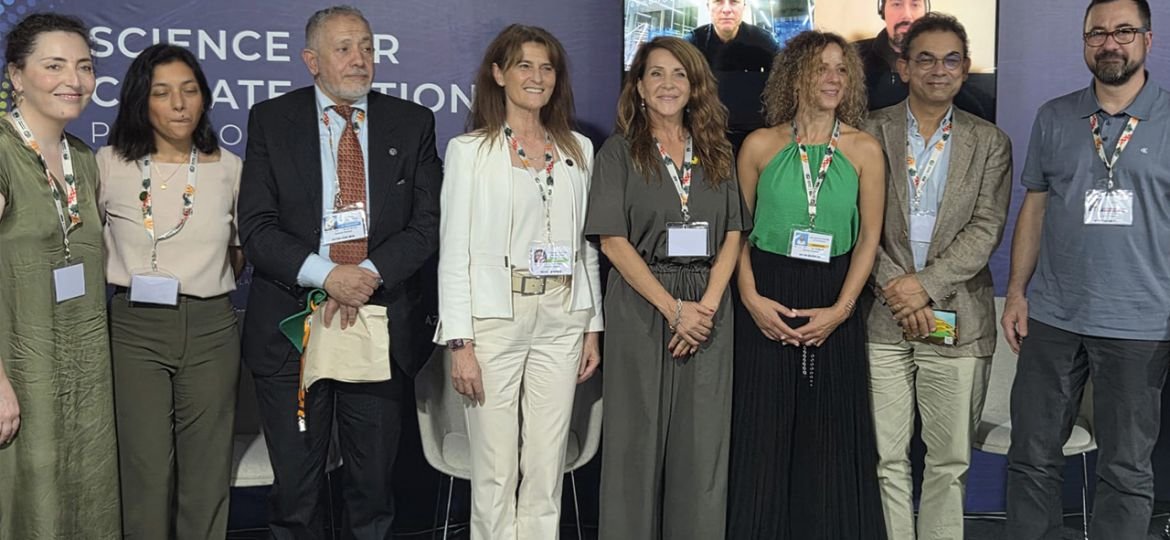Last week a necropsy was performed on a stranded blue whale in Chumildén, in the Chaitén municipality (Los Lagos). Prior determining the cause of death, a local indigenous community was granted their request to perform a farewell ritual for the cetacean.
The whale had stranded on Sunday, April 11, according to the information provided by the Chaitén Port Captaincy, who contacted the Regional Office of Sernapesca Los Lagos. Navy personnel sent images that made it possible to preliminarily determine it was a juvenile male, measuring 14.3 meters and weighing approximately 50 tons, of the endangered blue whale species (Balaenoptera musculus).
“The images allowed us to infer that the carcass is in an early type 3 condition: some areas of the skin in the caudal area are beginning to detach or are missing, the eyes are apparently absent or sunken, the coloration of the skin indicates an apparently well-maintained and fresh carcass, which is why it is presumed to be a recent death,” detailed the regional head of Conservation and Biodiversity of Sernapesca, Marisol Romero.
Likewise, Sernapesca Los Lagos determined that on Friday 16 a necropsy would be performed to establish the causes of death, for which a visit to the site was coordinated with the Maritime Authority and with the support of the organizations Panthalassa and MERI Foundation, NGOs that have scientific teams linked to the study of large cetaceans.
INDIGENOUS COMMUNITY REQUEST
Upon learning of the stranding, the local community contacted Sernapesca to request educational talks and also the possibility of keeping the remains of the whale in a permanent exhibition for academic purposes. Likewise, the Chaingo de Loyola Indigenous Community sent a letter requesting a farewell ritual for the whale:
“We know that there are public health protocols for decomposition and that it must be buried for the decomposition process to take place. We are also concerned and want to be informed about the cause of death after the necropsy. But before the whale is buried, as it may not be the definitive place of burial, we request that a ceremony or prayer be held beforehand to bid farewell to the spirit of the whale as part of the spirituality of the Indigenous Peoples.”
This was reported by Branny Montecinos, Regional Director (S) of Sernapesca Los Lagos, who explained that the local community as a whole “requested the donation of the skeleton for its use in education and exhibition. Also, a local indigenous organization asked us to perform a prayer to bid farewell to this marine mammal before the necropsy began, and we are very happy not only to have fulfilled the purpose of the expedition but also to have been part of this ancestral ceremony.
Ricardo Sáez, head of Sernapesca’s Conservation and Biodiversity Unit, said that educational talks were given at the Loyola and Chumilden rural schools, “explaining the ecological role of these cetaceans, as well as the importance of their protection and conservation. At the same time, we are coordinating with the municipality of Chaitén the burial of the remains in situ, for later exhumation and reconstruction of the skeleton, to be installed in a permanent exhibition, with the sponsorship of the MERI Foundation.”
“Community participation in conservation initiatives is fundamental,” said Ana María Molina, Executive Director of MERI. “It is impossible to work efficiently in this area without the participation of the State, the private sector and civil society. We are grateful that Sernapesca has invited us to be part of not only of the scientific research, but also of the activities with local schools, whose students, teachers and parents are the protagonists of this story.”
The prayer was held last Friday morning and about 30 people attended, including Sernapesca officials and NGO representatives, as well as children from the local community. Once the ceremony was over, the necropsy was performed, and finally the whale remains were buried.
Source: Sernapesca





